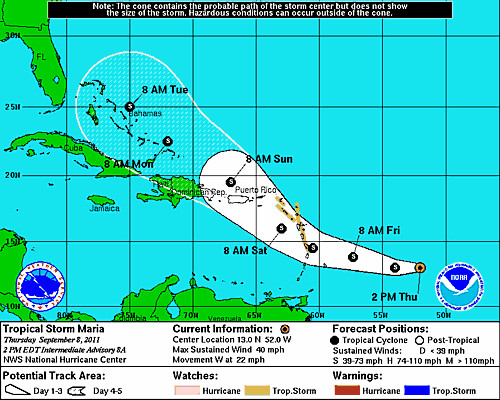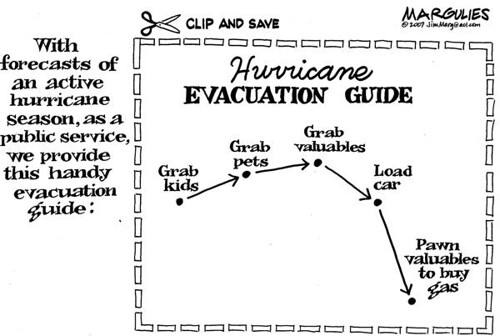This is an important question since the Northeast is dealing with major flooding in part due to the two latest tropical systems: Irene and Lee. Tropical Storm Maria is presently located at latitude 13 north and longitude 52 west and is expected to track farther west than Hurricane Katia did. Conventional meteorologists at our point in time state that it's too soon to tell what Maria will do. We may, however, be able to glean some information from Johannes Kepler's long-range weather forecast method based on planetary cycles.

According to this forecast system, the storm-breeding influence of the planets Uranus and Pluto affect the Northeast U.S. for the summer season. Both these planets will be spurred into action between the 16th and 18th of September.
Therefore, if Maria remains a tropical storm or strengthens to hurricane status, these planetary indications over the Northeast suggest that Maria could strike the area roughly from the Delmarva Peninsula eastward through New Jersey and Long Island.
There is always a chance that these planetary indicators suggest some other type of severe weather. For example, one of the last times they were activated, (August 9th)
storms ripped through parts of Delaware, southeastern Pennsylvania, and southern New Jersey causing power outages to an estimated 19,000 people in New Castle County, Delaware, traffic snarls, and possible tornado.

According to this forecast system, the storm-breeding influence of the planets Uranus and Pluto affect the Northeast U.S. for the summer season. Both these planets will be spurred into action between the 16th and 18th of September.
Therefore, if Maria remains a tropical storm or strengthens to hurricane status, these planetary indications over the Northeast suggest that Maria could strike the area roughly from the Delmarva Peninsula eastward through New Jersey and Long Island.
There is always a chance that these planetary indicators suggest some other type of severe weather. For example, one of the last times they were activated, (August 9th)
storms ripped through parts of Delaware, southeastern Pennsylvania, and southern New Jersey causing power outages to an estimated 19,000 people in New Castle County, Delaware, traffic snarls, and possible tornado.
Kepler's method allows astrometeorologists to venture long-range weather forecasts months or years in advance. The forecast being shared here was formulated in February of this year and published in the August edition of Dell Horoscope magazine. By clicking on the links below, you can see other tropical systems from this year and last year's hurricane season that were predicted by this method.
Tropical Storm Lee Fulfills Long-range Weather Forecast
Hurricane Irene Closely Fulfills Long-range Forecast
New Weather Alternative Website
What About Rain For Texas?
Tropical Storm Harvey Fulfills Long-range Weather Prediction!
Hurricane Season 2011 Baja, Mexico
Hurricane Risk-Management
Hurricane Season 2011 Predictions
Overview of UK Winter 2012-13
The Winters of 2011-14
Fulfilled Long-range Forecasts for Hurricane Season 2010
Introduction to the Weather Alternative
How Long-Range Forecasts Are Made
Excerpts from Tidal Dynamics by Fergus J. Wood

No comments:
Post a Comment